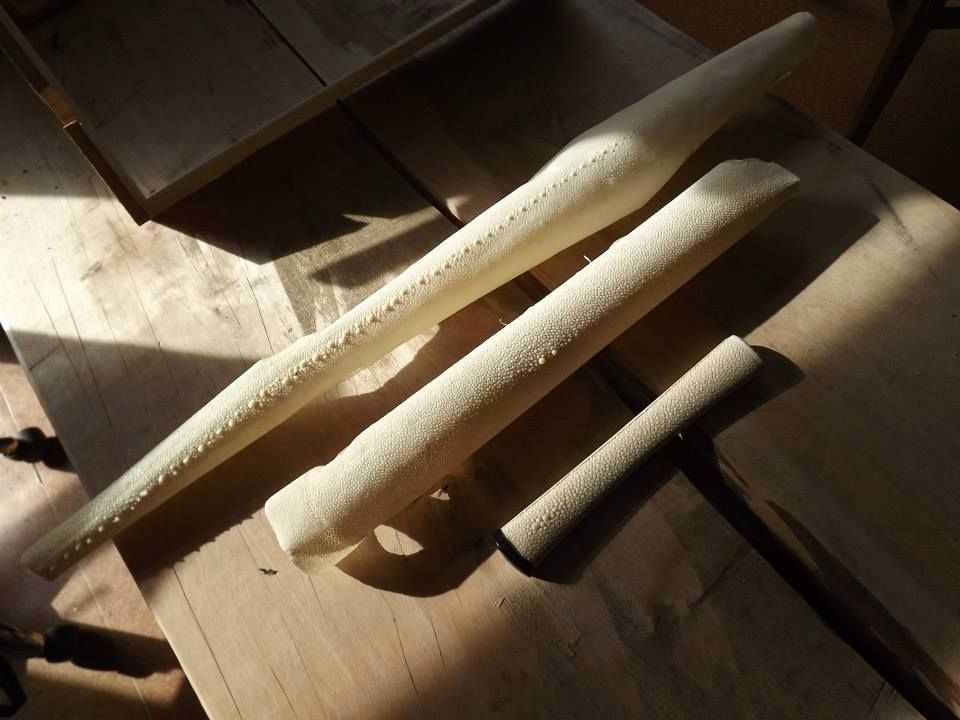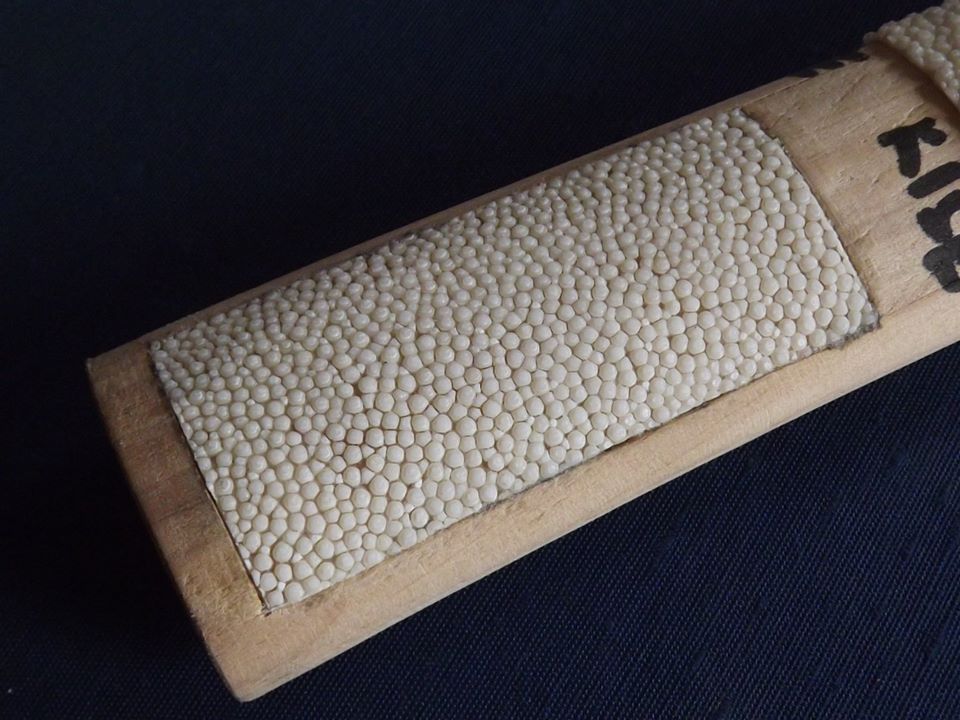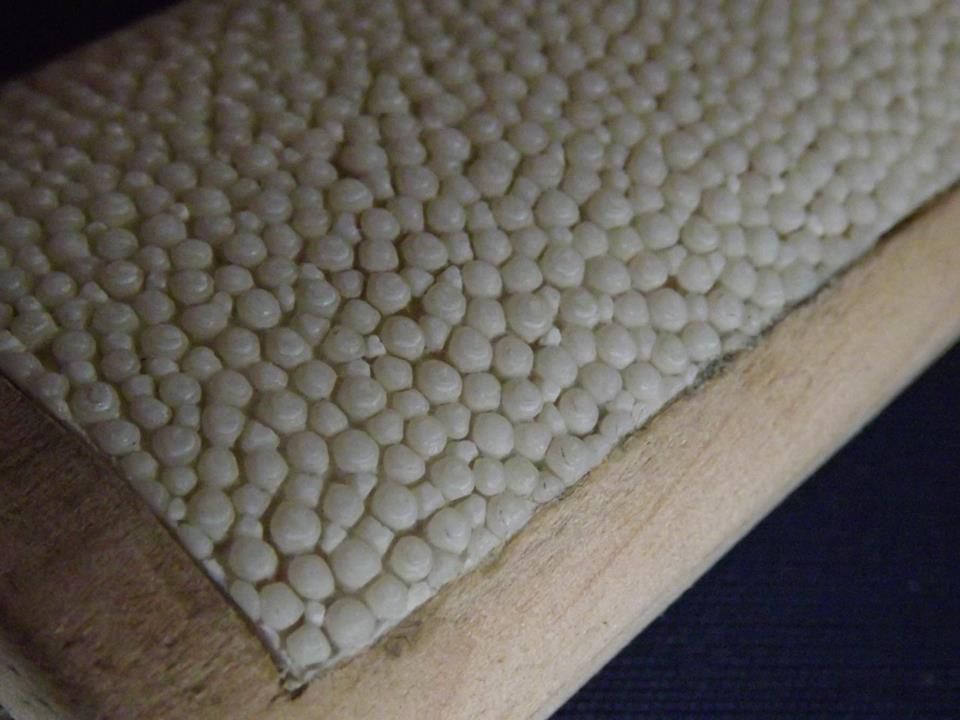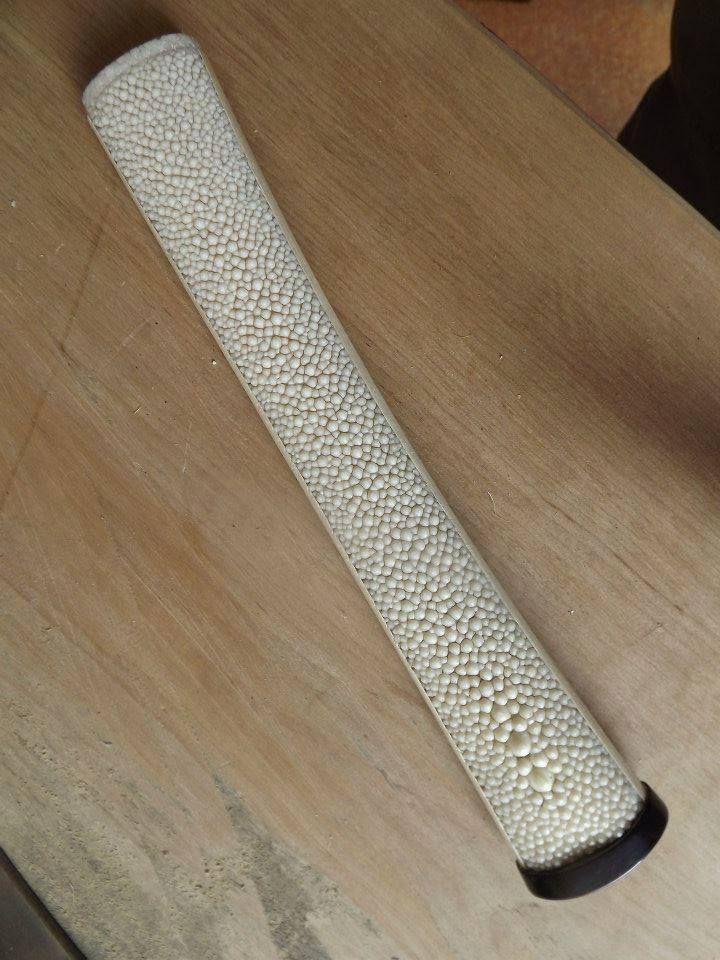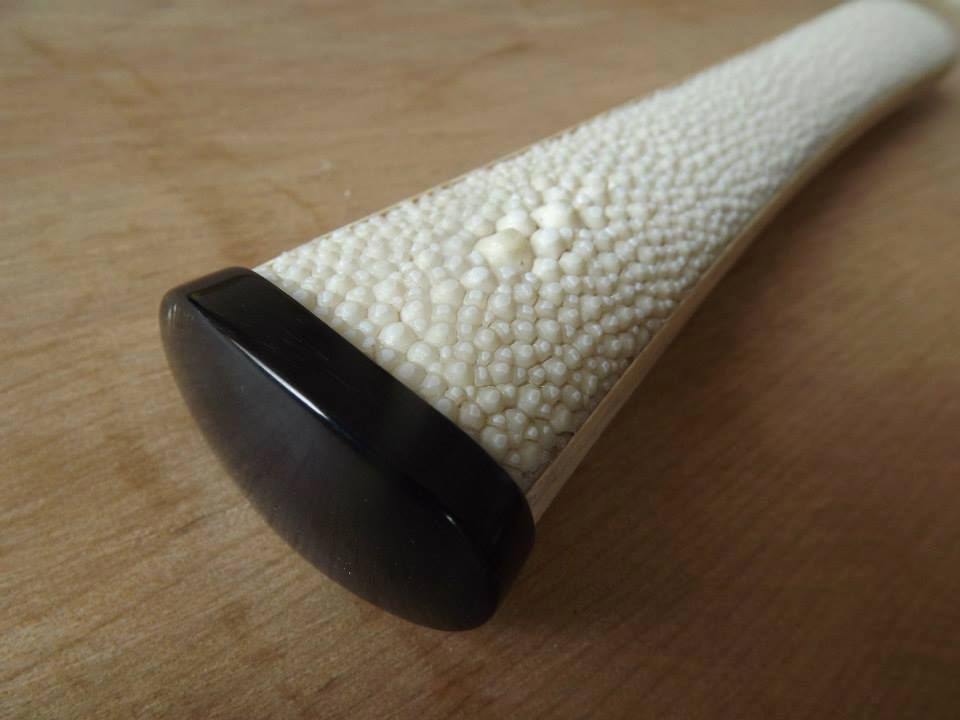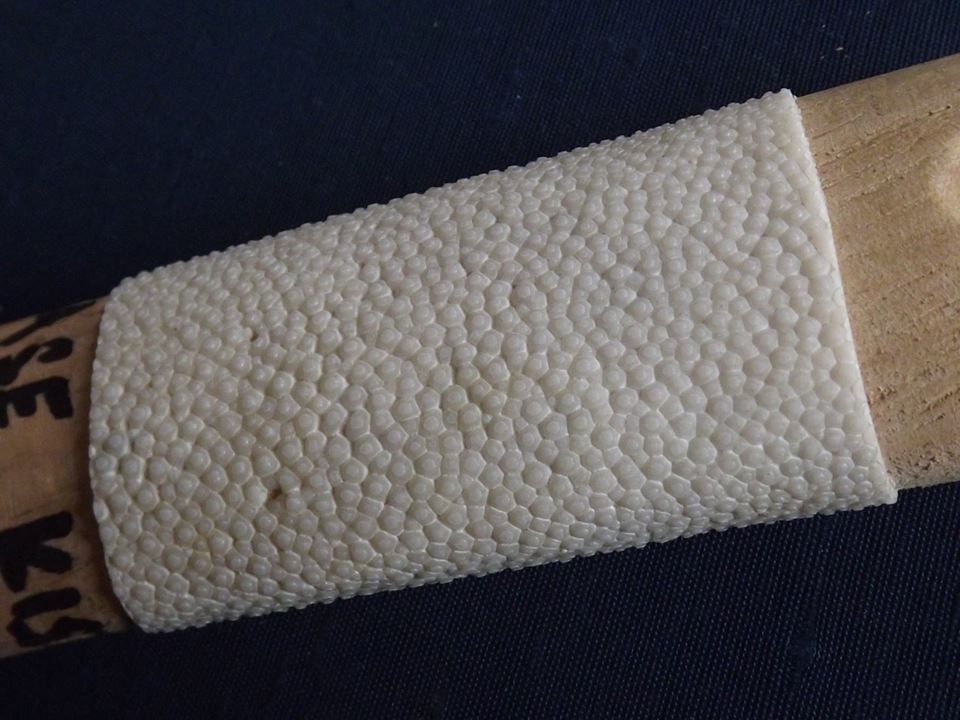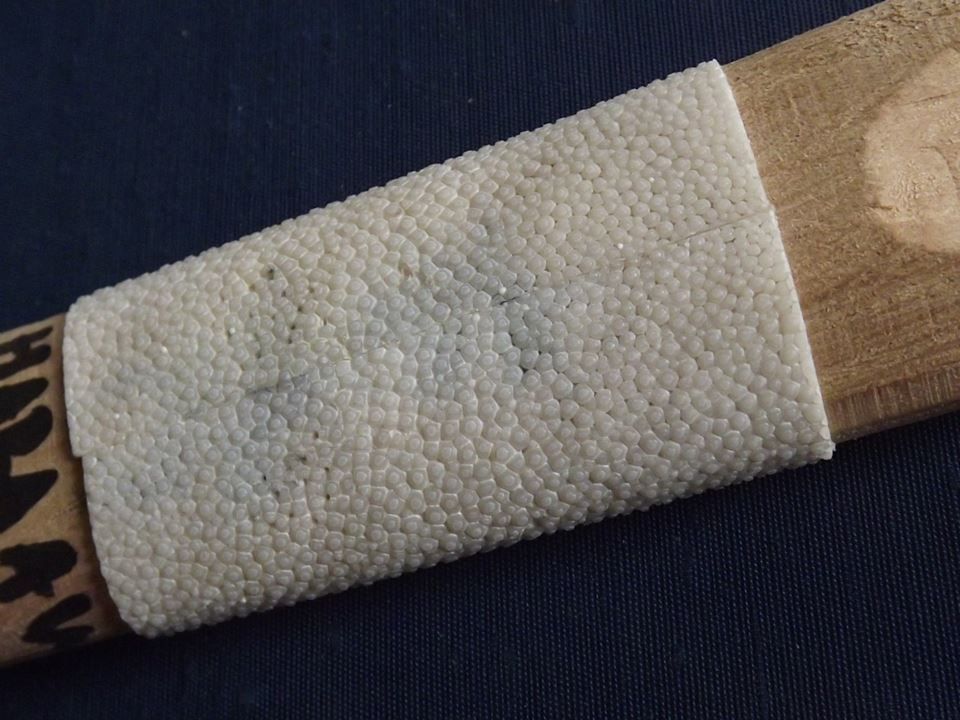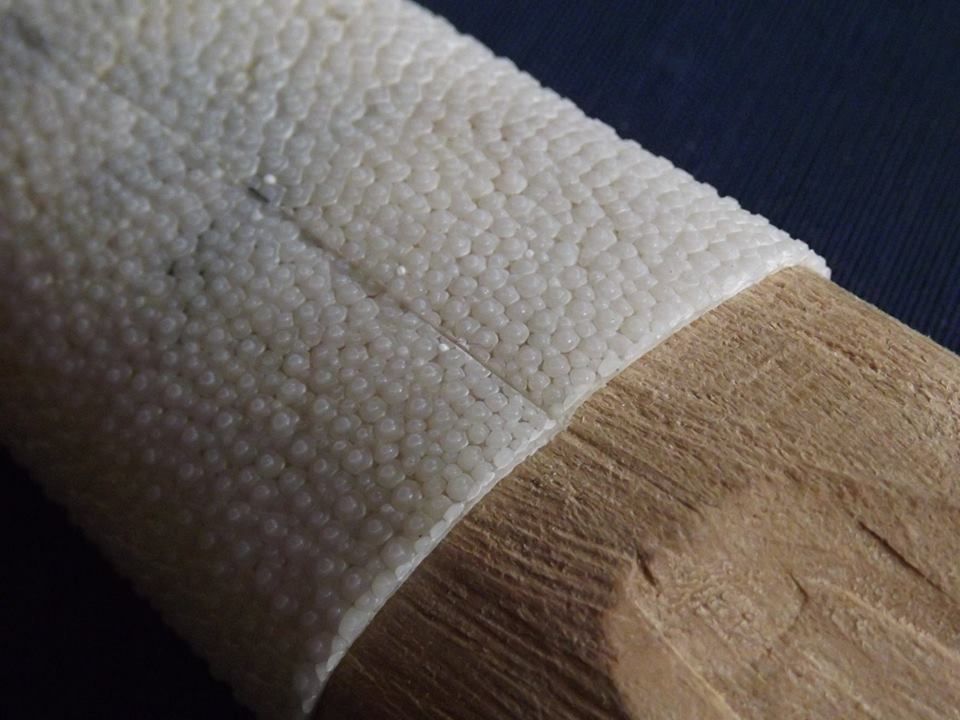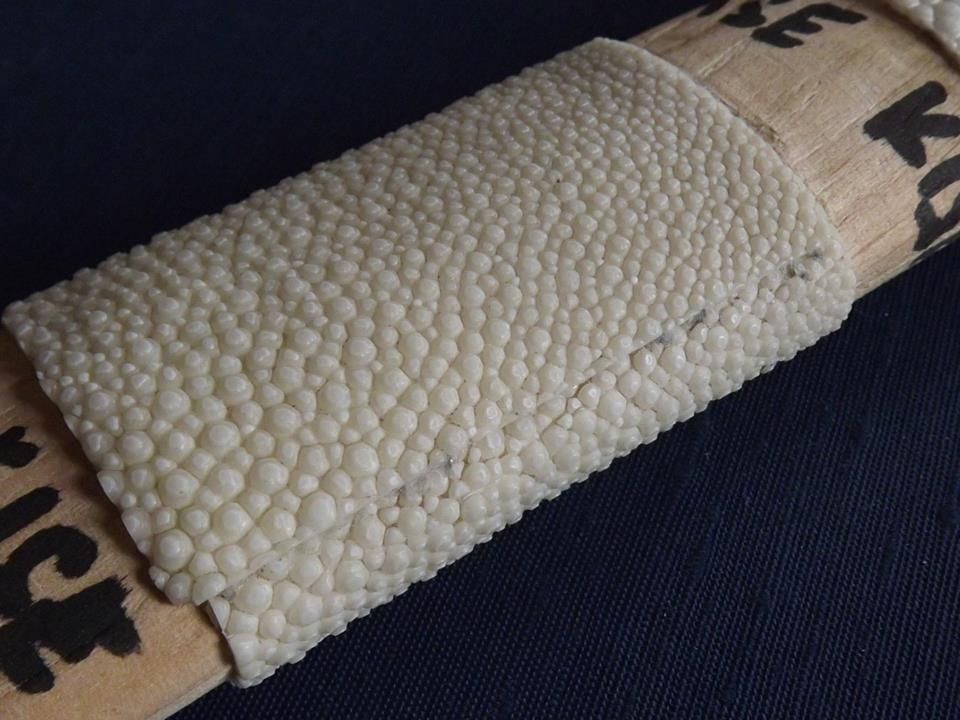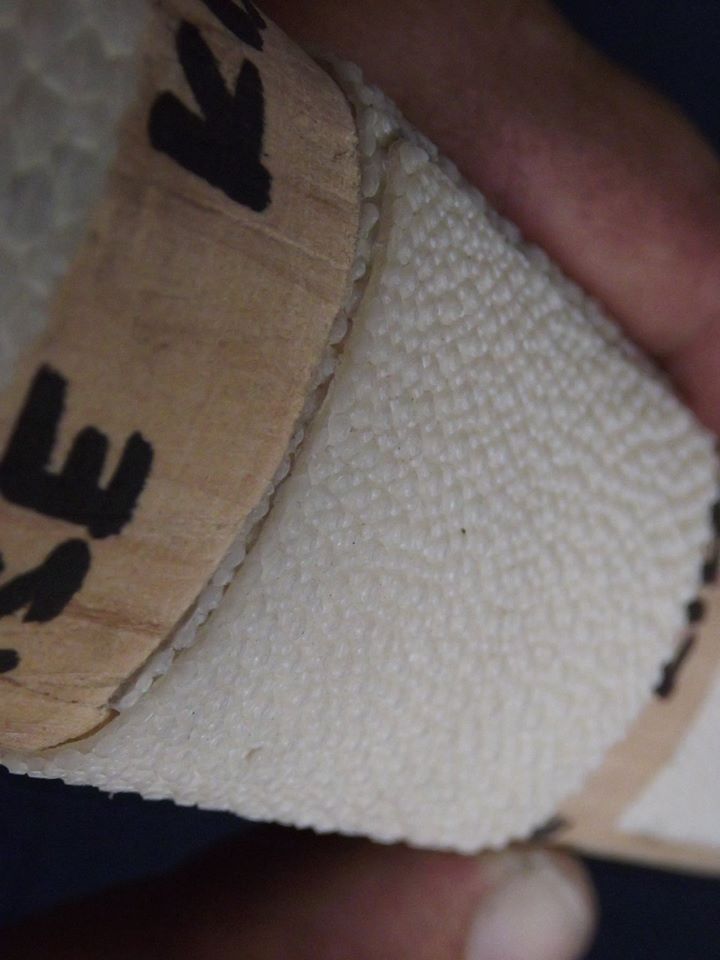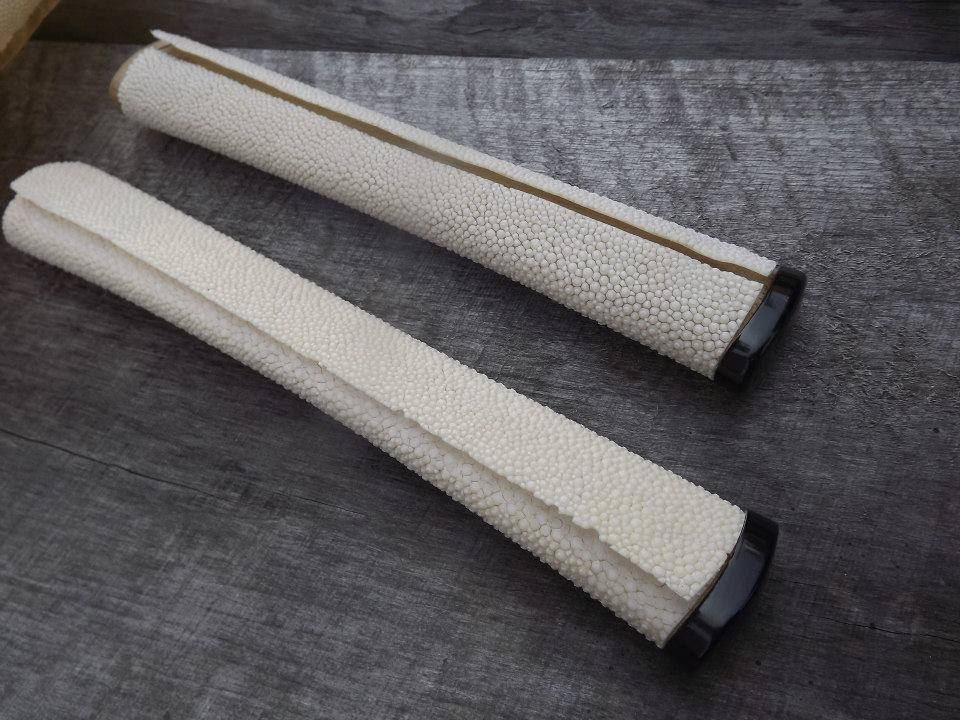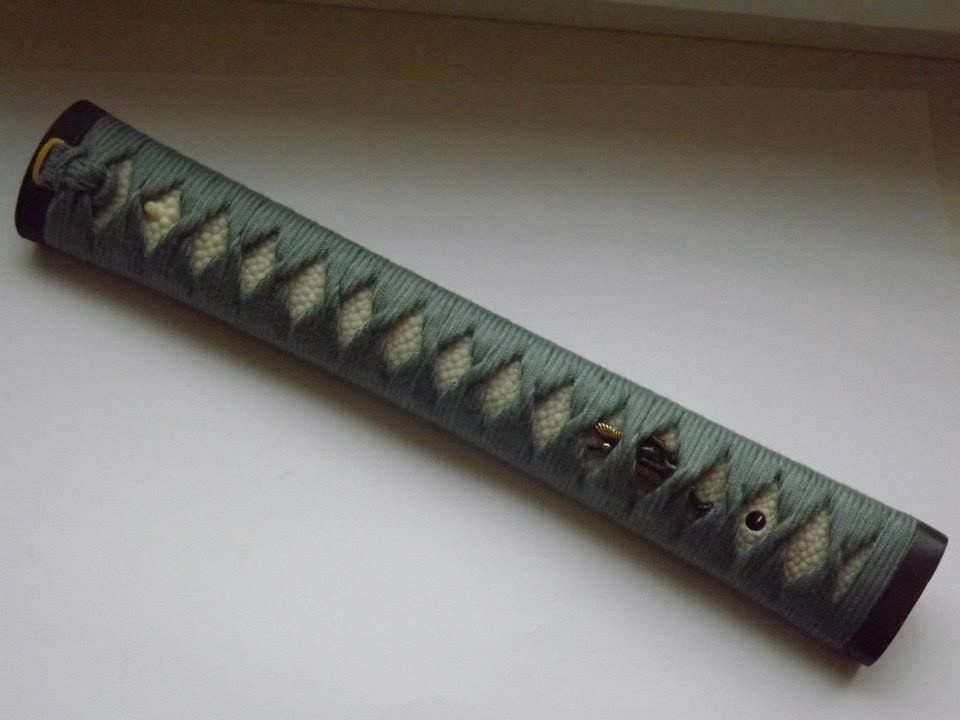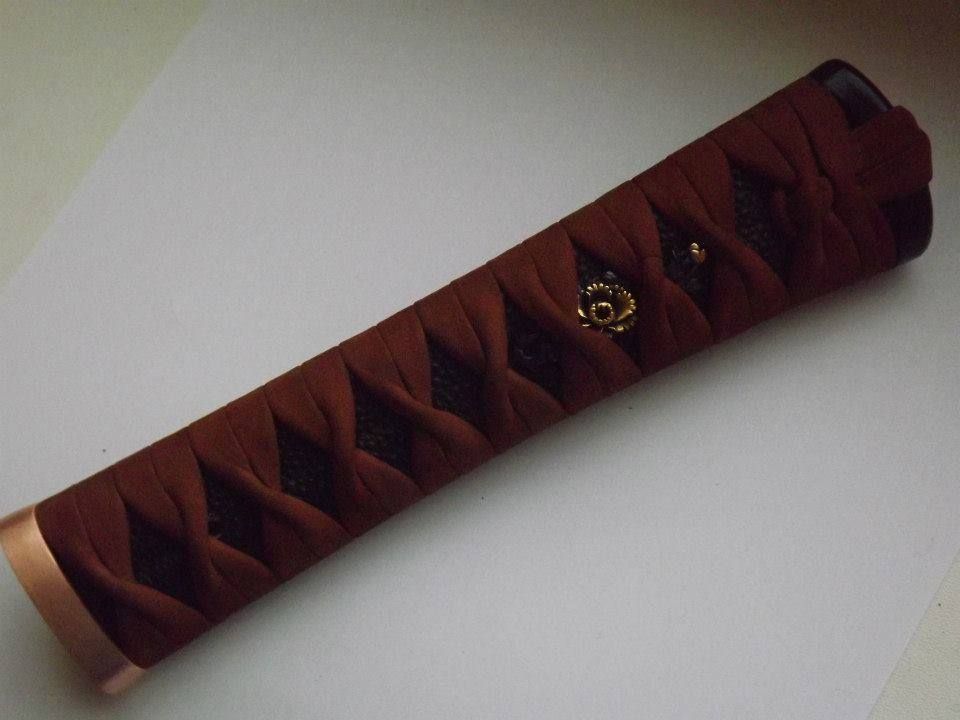Samegawa tsuka
Pavel Bolf
Samegawa tsuka. The wooden core of the handle is covered with stingray leather. It is very hard. Its surface is made of bone grains. There are three styles of using stingray skin on a sword hilt.
The first, TANZAKU KISE, is two strips of leather glued into the hilt on the sides of the hilt.
The second, the HARAAWASE kise wraps around the wooden handle. The joint is located on the URA side of the handle in its longitudinal axis.
In the last method, the MAEDARE KISE leather wraps around the wooden core one and a half times. The twist and joint is on the ura side, the end is under the back of the handle.
The large stones occurring in the centre of the leather are always placed on the OMOTE side of the handle.The leather is very hard in its raw state and needs to be soaked before being placed on the handle. Once soaked, it softens and can be used to accurately fit the shape of the handle. After the wet leather is placed on the wooden core, everything is wrapped tightly with cord and left to dry. After drying, the shape of the same is fine-tuned, the overlaps are cut and sanded and the leather is glued to the wood.After the glue has dried, the leather can be repainted to increase moisture resistance. This is typical of my favourite style, Tensho, for example.
Translated with www.DeepL.com
